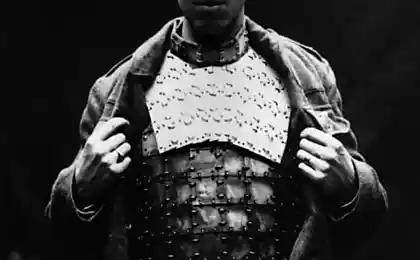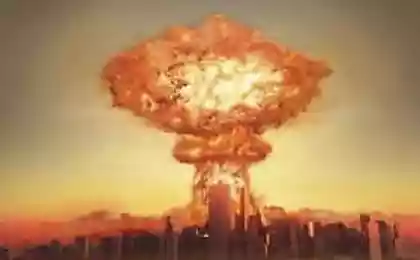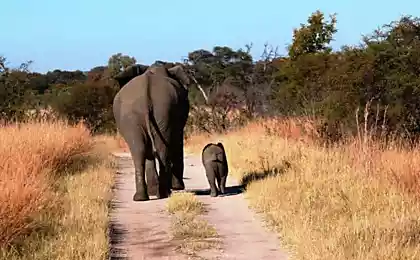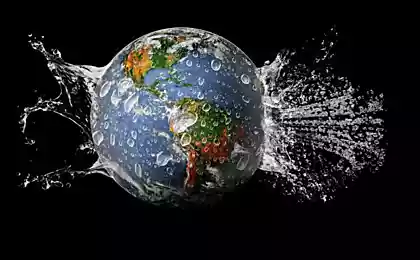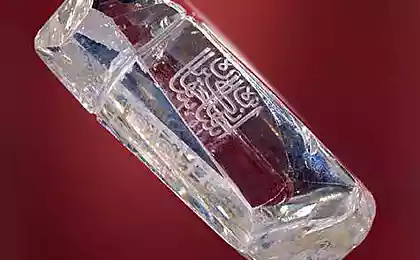6676
The most unusual animals on the verge of extinction
British scientists have compiled a list of 100 animals from the brink of extinction. These animals have little or no "relatives", respectively, their loss can critically affect the diversity of the animal world.

1. The long-nosed echidna (Tachyglossus bruijni), Papua New Guinea. Long-nosed viper Attenborough - one of the most primitive mammals on the planet. This is a mammal that lays eggs like a crocodile, long believed to be extinct until 2007, scientists have found a few specimens of this species. (SPL)

2. The three-toed sloth Miniature. Discovered only in 2001, this miniature sloth - the smallest and most endangered of extinction of all species of sloths. He lives on a tiny island off the coast of Panama. (Bryson Voirin / ZSL)

3. Saola or "Asian unicorn" was unknown to Western scholars until 1992. His discovery - one of the rarest and most interesting in the last 50 years. Now its population is incredibly small - perhaps only a few dozen individuals survived in the mountainous jungles of separating Laos from Vietnam. (Ban Vangaban village / WCS / ZSL)
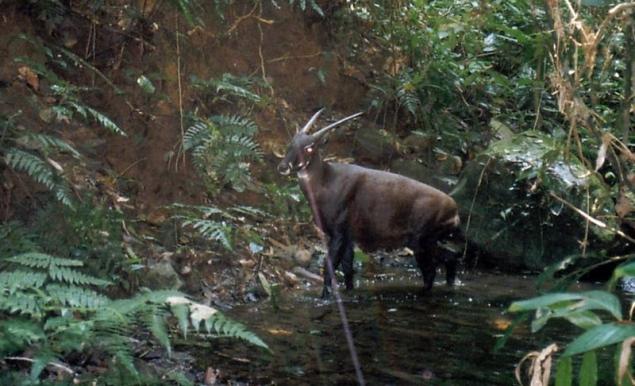
4. River dolphins - the last descendant of one of the early groups dlinnoklyuvyh dolphins swimming in the sea millions of years ago. This strange dolphin with a thin nose practically blind. It floats on the side and belly up and uses finger-formation on the fins to look for food on the bottom of rivers. (Rex Features)

5. Black and White Ruffed Lemur - the largest of the lemurs and Madagascar answer bumblebee. This animal is considered to be the world's largest pollinators. He developed a unique relationship with ravenaloy Madagascar, with which he gathers pollen on their fur while drinking nectar from the flowers of the tree. (Graham Turner / Guardian)

6. Asian tapir has a distinctive black and white pattern on the body. His most distinguishing feature - a long, prehensile nose, which he takes leaves. Although he is under threat of extinction mainly due to the reduction of habitat, this species is also life threatening hunting. (David Moir / Reuters)

7. Dwarf Galago - the smallest and most endangered species of Galago. He lives in one of the most remote forest regions of Tanzania. It is included in the list of the 25 primates endangered. (Johan Karlsson / ZSL)

8. Chinese pangolin. These unusual mammals are covered with scales formed glued hair, which is a quarter of the total weight of the animal. With their powerful claws and a long (40 cm) Chinese pangolins are exclusively ants and termites. This type is widely used because of the meat, which is considered a delicacy, and because of its skin and scales that are used in traditional Chinese medicine. (Keren Su / Corbis)

9. Long-eared jerboa - a small jumping rodent resembling a mouse with a long tail and very long hind legs. Long-eared jerboa can be distinguished from other gerbils due to their huge ears that are almost a third more than their heads. This is a little known. Other jerboa - nocturnal creatures, the day they sit in burrows underground, they dig themselves. The numbers of this species is reduced as a result of human intervention in its habitat. (Liu Jian / Corbis)

10. pygmy hippopotamus. The word "hippopotamus" comes from the Greek for "river horse", which is consistent lifestyle pygmy hippos, who spend most of their time in the rivers and swamps. This animal is under constant pressure from the people. Small, isolated population of hippos Nigerian considered extinct. For decades, nothing about them reported, although unofficial estimates locals believe that they can still exist. (Newspix / Rex Features)

11. Slender loris has an incredibly thin front and rear paws. His huge round eyes, allowing the animal to see perfectly and hunt insects at night. The number of these small primates is reduced, as their habitat - the forest - are cut down. (HO / Reuters)

12. Bactrian, or two-humped camel. This camel is probably the ancestor of all domestic Bactrian camels. It is perfectly adapted to life in the harsh Gobi Desert. This species can withstand drought, food shortages and even radiation. However, to date only survived more than 1,000 individuals living in four places. These animals are in danger of extinction due to hunting for them, habitat loss and competition for resources. (Scott T. Smith / Corbis)

via Source

1. The long-nosed echidna (Tachyglossus bruijni), Papua New Guinea. Long-nosed viper Attenborough - one of the most primitive mammals on the planet. This is a mammal that lays eggs like a crocodile, long believed to be extinct until 2007, scientists have found a few specimens of this species. (SPL)

2. The three-toed sloth Miniature. Discovered only in 2001, this miniature sloth - the smallest and most endangered of extinction of all species of sloths. He lives on a tiny island off the coast of Panama. (Bryson Voirin / ZSL)

3. Saola or "Asian unicorn" was unknown to Western scholars until 1992. His discovery - one of the rarest and most interesting in the last 50 years. Now its population is incredibly small - perhaps only a few dozen individuals survived in the mountainous jungles of separating Laos from Vietnam. (Ban Vangaban village / WCS / ZSL)

4. River dolphins - the last descendant of one of the early groups dlinnoklyuvyh dolphins swimming in the sea millions of years ago. This strange dolphin with a thin nose practically blind. It floats on the side and belly up and uses finger-formation on the fins to look for food on the bottom of rivers. (Rex Features)

5. Black and White Ruffed Lemur - the largest of the lemurs and Madagascar answer bumblebee. This animal is considered to be the world's largest pollinators. He developed a unique relationship with ravenaloy Madagascar, with which he gathers pollen on their fur while drinking nectar from the flowers of the tree. (Graham Turner / Guardian)

6. Asian tapir has a distinctive black and white pattern on the body. His most distinguishing feature - a long, prehensile nose, which he takes leaves. Although he is under threat of extinction mainly due to the reduction of habitat, this species is also life threatening hunting. (David Moir / Reuters)

7. Dwarf Galago - the smallest and most endangered species of Galago. He lives in one of the most remote forest regions of Tanzania. It is included in the list of the 25 primates endangered. (Johan Karlsson / ZSL)

8. Chinese pangolin. These unusual mammals are covered with scales formed glued hair, which is a quarter of the total weight of the animal. With their powerful claws and a long (40 cm) Chinese pangolins are exclusively ants and termites. This type is widely used because of the meat, which is considered a delicacy, and because of its skin and scales that are used in traditional Chinese medicine. (Keren Su / Corbis)

9. Long-eared jerboa - a small jumping rodent resembling a mouse with a long tail and very long hind legs. Long-eared jerboa can be distinguished from other gerbils due to their huge ears that are almost a third more than their heads. This is a little known. Other jerboa - nocturnal creatures, the day they sit in burrows underground, they dig themselves. The numbers of this species is reduced as a result of human intervention in its habitat. (Liu Jian / Corbis)

10. pygmy hippopotamus. The word "hippopotamus" comes from the Greek for "river horse", which is consistent lifestyle pygmy hippos, who spend most of their time in the rivers and swamps. This animal is under constant pressure from the people. Small, isolated population of hippos Nigerian considered extinct. For decades, nothing about them reported, although unofficial estimates locals believe that they can still exist. (Newspix / Rex Features)

11. Slender loris has an incredibly thin front and rear paws. His huge round eyes, allowing the animal to see perfectly and hunt insects at night. The number of these small primates is reduced, as their habitat - the forest - are cut down. (HO / Reuters)

12. Bactrian, or two-humped camel. This camel is probably the ancestor of all domestic Bactrian camels. It is perfectly adapted to life in the harsh Gobi Desert. This species can withstand drought, food shortages and even radiation. However, to date only survived more than 1,000 individuals living in four places. These animals are in danger of extinction due to hunting for them, habitat loss and competition for resources. (Scott T. Smith / Corbis)

via Source








